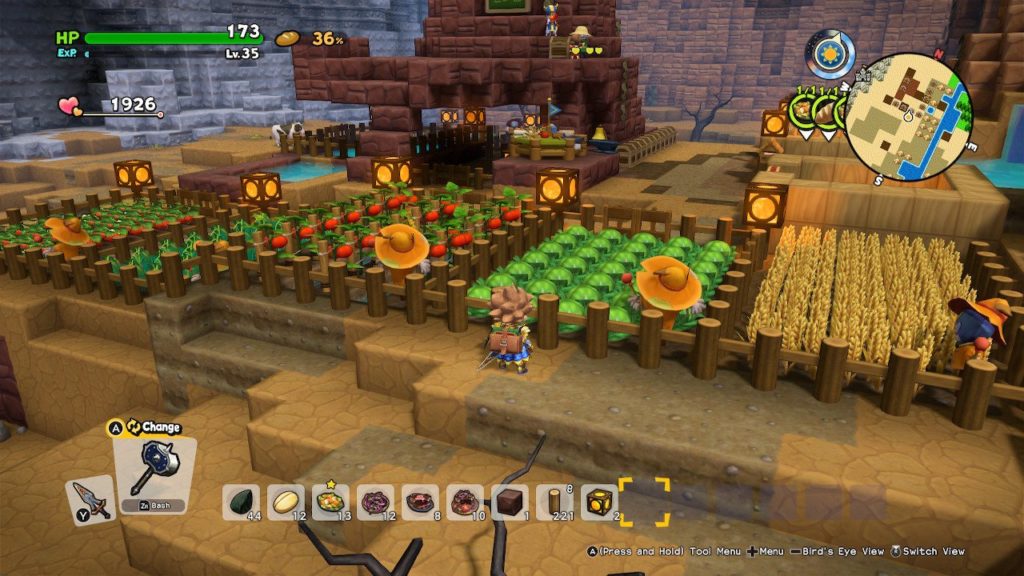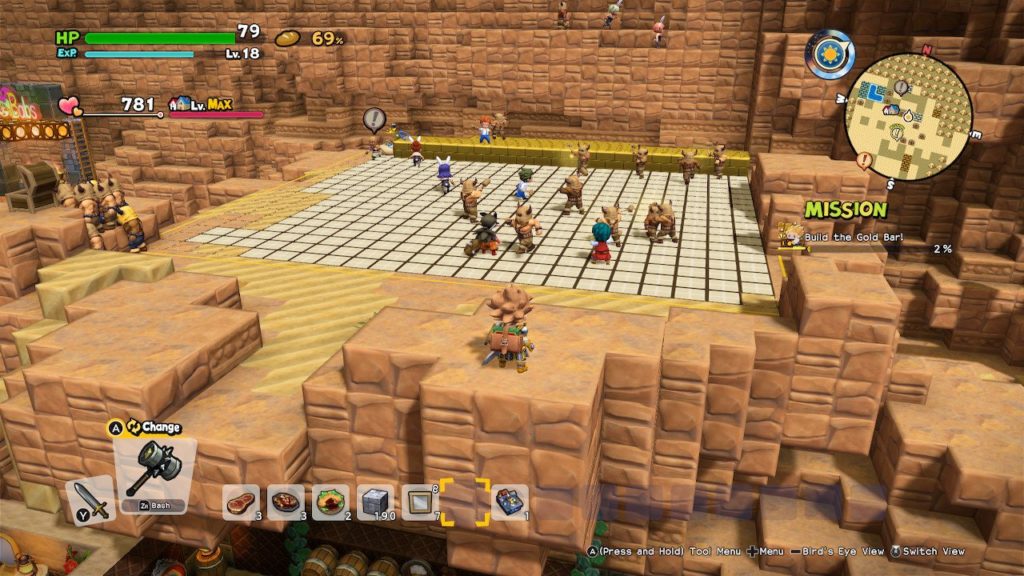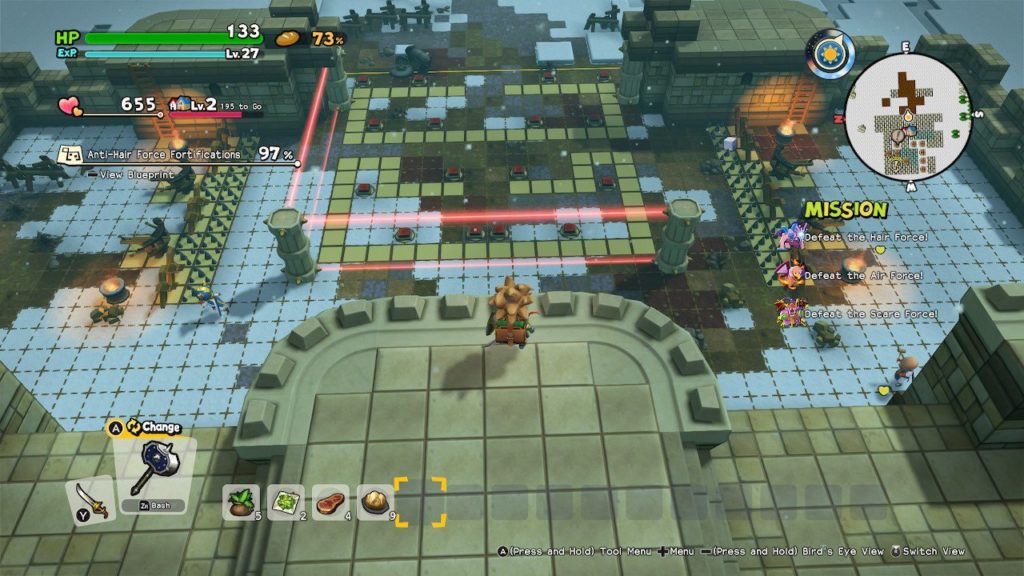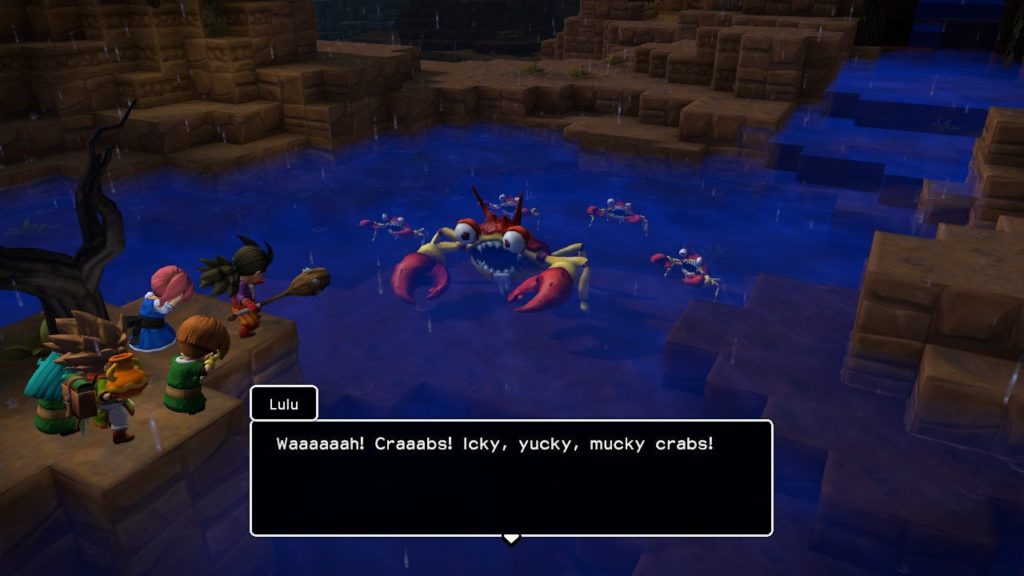- Genre: Action RPG / Sandbox Builder
- Platform: Switch
- Also Available On: PS4
Playing this game was all sorts of breaking my usual tendencies. I would typically buy this game on PS4 for better performance, but opted for the Switch for handheld convenience. I don’t really like builders like Minecraft, but the story and goal-focused gameplay really looked interesting to me. I would typically shelve a game after reaching end credits, but I’m already hours past that point and still playing. Really I think all of those things and the quality of the core game itself have helped me to really enjoy this game a lot more than I really expected I would.

Where the first Builders was a sequel to Dragon Quest 1, this is a sequel to Dragon Quest 2. It picks up some time after the original game, the player becomes friends with the resurrected final boss of that game, and a buddy copy adventure ensues, with the player being the builder and Malroth being the smasher. It’s all a little bit absurd, and it provides just enough of a grounding to the DQ world to really drive the fact that this game has goals and progress and a reason to march forward.
I’ve never really been a big fan of Minecraft, which makes this game perhaps a weird target for me to play. I just never really dealt well with the open ended nature of the game, and never really felt like putting together my own list of goals to move toward. DQB2 solves a lot of that for me by providing even a small overlay of goals to head towards. I’ll just do a quick walk through of the sort of opening little bit of time in the game where you learn to build basics, learn to gather followers, and learn to farm to provide yourself food. How it works in this game is important to why it clicked more than Minecraft.

Eating to keep away from hunger is important in both games, as is the act of creating farms to sustain this growth. The first part is building farms, and importantly equipment for it. In Minecraft? You’ve got to know some recipe or figure it out, then build out some stuff with an interface that is cool to see a few times, but becomes tedious over time. In DQB2? You learn recipes and automatically batch build them in an easy to use menu. Cool, you’ve got a farm. In Minecraft? Manually grab things every time. In DQB2? Recruit followers to your island who will keep the farm in shape, plant new crops, pick grown crops, and put them in storage for you. Cool, now you’ve got some food, and can eat it raw or cook it. In Minecraft? Get on that yourself. In DQB2? Cook a thing once to learn it, then have a cooking follower do it for you, and grab from storage as needed.
I suppose the high level of all of this is that once you do something once, and it becomes automated. This allows you to focus on what’s next, instead of having an ever growing list of things that you have to do on routine. You learn to farm, setup the basics, then automate it. You later learn to mine, setup the basics, then automate it. Hell, as you start to explore smaller side islands you can gain perks that give you infinite resources of some types, which completely removes the tedious nature of having to find more and more and more of basic resources. The nature of all this is that the repetition is removed, and you’re basically focused on always doing new cool things.
The fact that this ties into a light action RPG layer also helps a lot. In general exploration, there’s simple party-based hack and slash combat. You’ve got some light gearing to provide a nice power curve. You’ve got some tools to provide enhanced exploration as the game goes on. Basically, that progression curve of action RPGs is there enough to provide a push forward. Where this really comes into play is the base defenses that grow more complex as the game goes on.

The base defenses are effectively tower defense while mobile. On your side, you’ve got your base defenses and your base followers. Followers can be geared up using the same recipes used to create player gear to make them more effective. Base defenses are the real meat though. This runs the gamut from simple spikes and ballistas to more fun magic traps, whether it’s fire, wind, or ice. These provide a really fun way to meld customizing your base through the heavy builder gameplay with the combat mechanics and more typical ARPG elements. As distractions along the way they also provided periods of strategy and pace changing that broke up the monotony of exploring and digging for resources.

I think at the end of it all, I’m surprised how well just a few small changes to the core Minecraft loop got me to play the game in a different disguise. Giving me goals, giving me a story, automating monotony – those are all things that are small in theory but huge in practice. Having played the original Builders, this is also a huge push forward just for this series. The first one felt like a half step in this direction, but the sequel really smoothed out the game. It’s gone from being a neat variant on an idea to being something that I don’t want to put down, and honestly I can’t say that I saw that coming.
